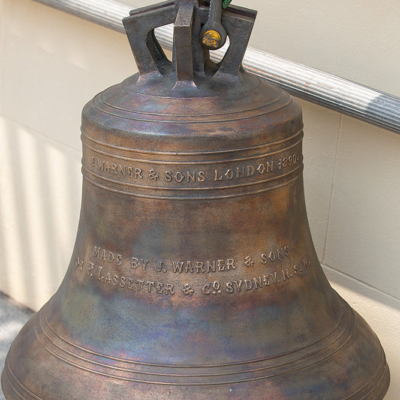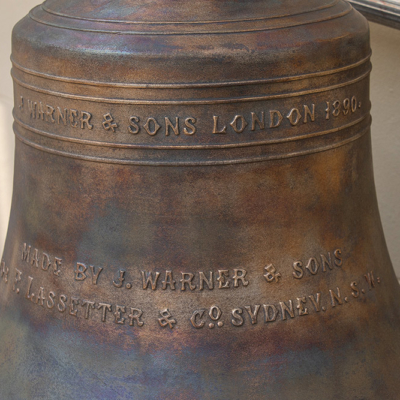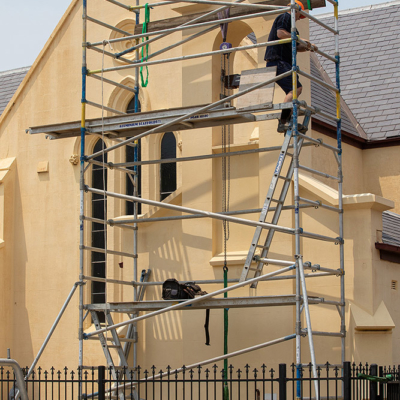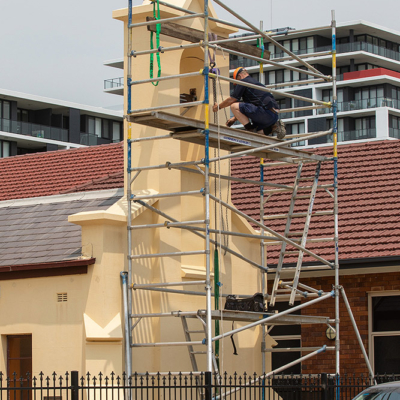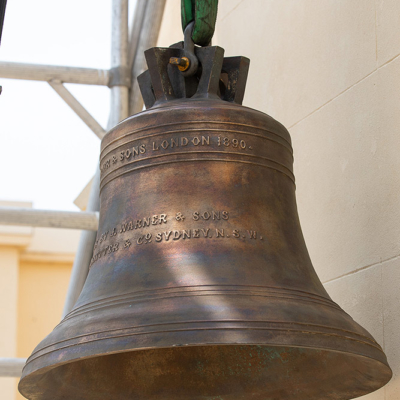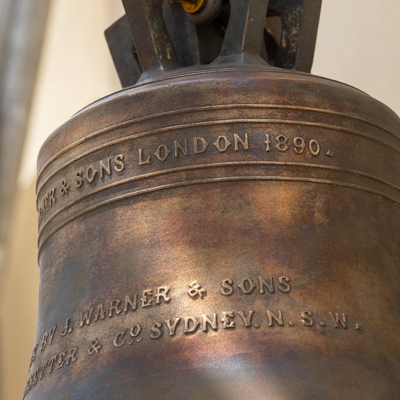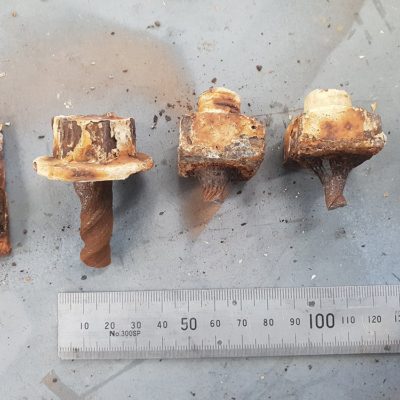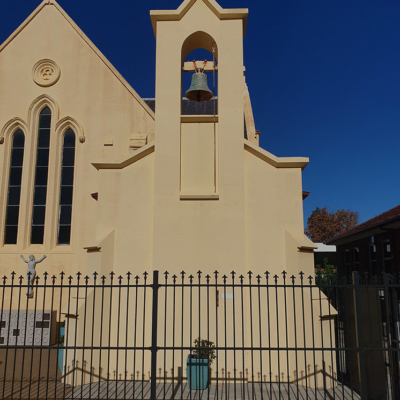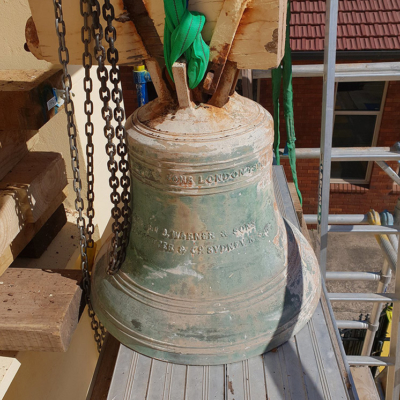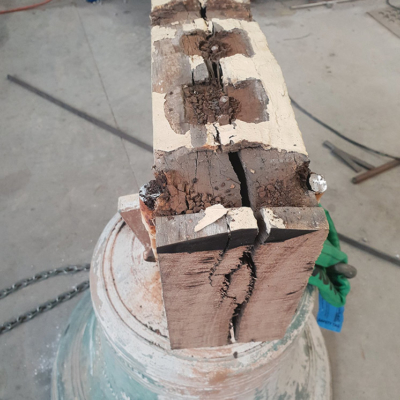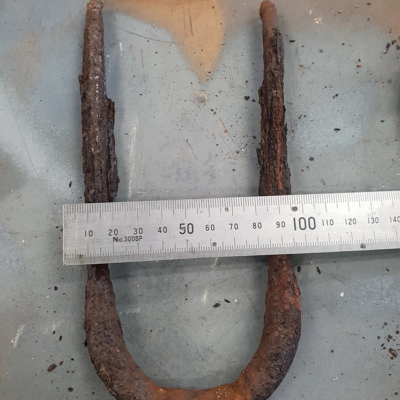One bell of a restoration!
November 22, 2019
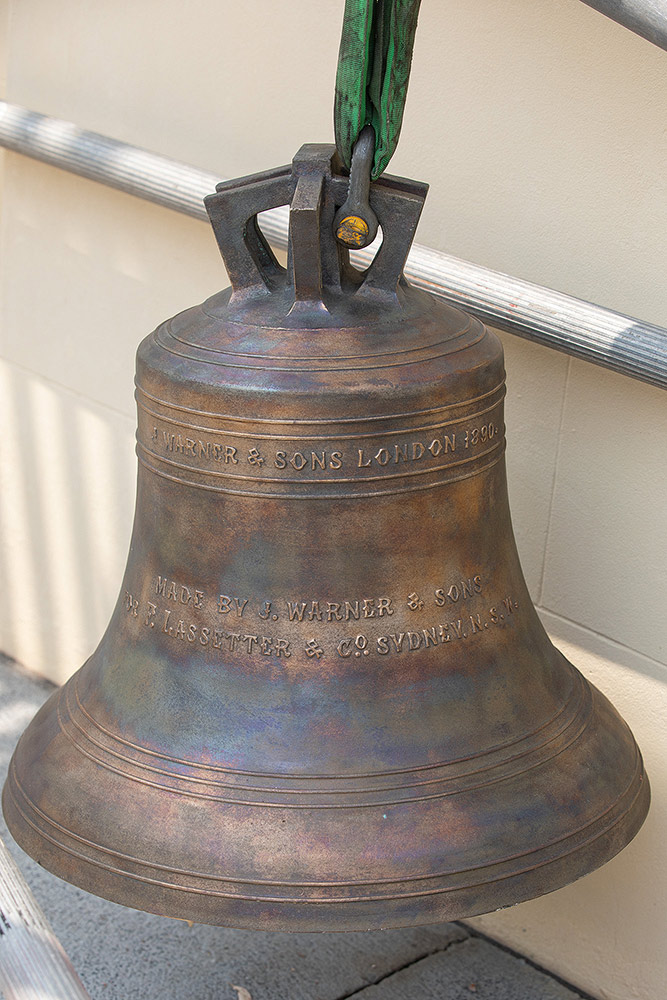 How many of you have looked skyward at St Francis Xavier Cathedral in Wollongong over the past three months and noticed that the bell has been missing? Our beloved bell was in a serious state of disrepair and wasting away! That was until @Tower Clock Services Australia weaved their magic and fully restored this iconic Illawarra landmark.
How many of you have looked skyward at St Francis Xavier Cathedral in Wollongong over the past three months and noticed that the bell has been missing? Our beloved bell was in a serious state of disrepair and wasting away! That was until @Tower Clock Services Australia weaved their magic and fully restored this iconic Illawarra landmark.
Cathedral Archivist Neil Dwyer has provided us with a little bit of the history of the bell:
How long has the church bell rung at St Francis Xavier’s? We do not know. The church was blessed and opened 170 years ago this December in 1849; despite not having a floor or ceiling according to one visitor. What we do know is that Australia was a missionary country and churches and schools for Catholics were clear priorities compared to the luxury of purchasing a bell—a bell which would need to be procured overseas from, for example, Murphy’s Bell Factory of Dublin, who provided a peal of bells to St Patrick’s Cathedral Melbourne or from C. & G. Mears of Whitechapel Road, London for St Benedict’s Church, Broadway, which was the first Catholic parish church in Australia to have change-ringing bells. St Benedict’s now has the four oldest (cast in 1849) bells on mainland Australia which are still hanging in their original tower.
If there was a bell tolled at St Francis Xavier’s in the 1840s, it would have been heard not only in the small seaside village but out to the farms on the surrounding estates thus fulfilling its purpose of calling a people to Mass. What we do know is that in September 1891 a bell and belfry, costing £70 ($8,326 today) were presented by Mrs Beatson, the matriarch of a generous local Catholic family, following the re-opening of St Francis Xavier’s after four months of refurbishment.
The use of bells is of very ancient origin. Bells were in existence in the days of Moses. Bells came into use in churches in A.D. 400 initiated by St Paulinus, Bishop of Nola and sanctioned for the whole Church in A.D. 604 by Pope Sabinian. Their use spread and in unsettled times the church bell not only summoned the Faithful to religious services but also gave the alarm when danger threatened. However, these were small bells. Very large bells (for church towers) were introduced by the eighth century and probably in common use by the eleventh century. At the beginning of the thirteenth century the practice of elevating the Sacred Host and the Chalice at Mass after the consecration of each was introduced. This was followed by the practice that for those who were not present at Mass the church bell was rung so all people may pause, kneel and make an act of adoration. Today there is the ringing of the sanctuary bell at the elevations.
It is the practice of the Church to bless any objects that are used in the service of God. Bells have a significant and solemn role in the Church and in the life of the parish. Designated for sacred purposes, the ceremony for consecrating a church bell has specific prayers and sacred oils and water are used. Many church bells are engraved with specific dedications (a custom possibly earlier than the eighth century) as are all eight bells of St Patrick’s Cathedral Melbourne; one is dedicated to the Immaculate Heart of Mary (Patron of our Diocese), another to St Francis Xavier.
Do not underestimate the value of things. Look at the objects inside the Cathedral: the pews, the baptismal font, the processional cross, the Foley Memorial Window. These are only things—not even the essential things for Mass or a liturgy. Yet they deserve respect because people have invested in them with their stories, memories and they help us call to mind the presence goodness of God. When we contribute to the restoration of the Cathedral bell, we honour our stewardship of the Faith: we pass onto the next generation that which we were given by the past. The bell has been the parish’s expression of emotions: For our parishioners, this bell has called people to Mass, rung out the joys at weddings and farewelled the deceased after the Requiem.
Check out the before and after photos of the cathedral bell.

